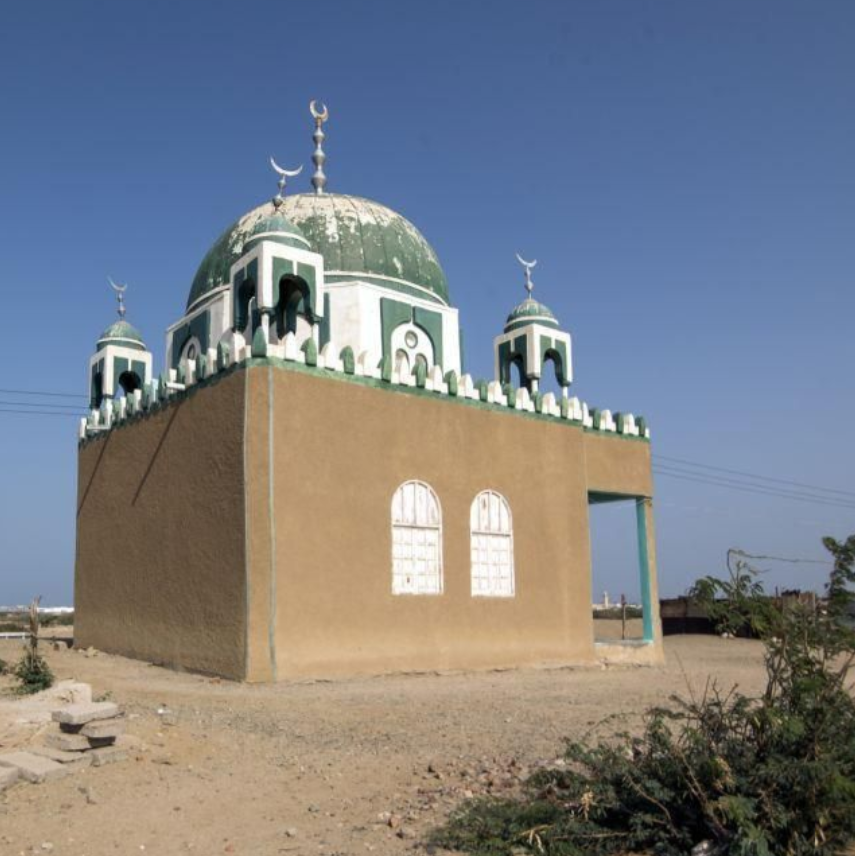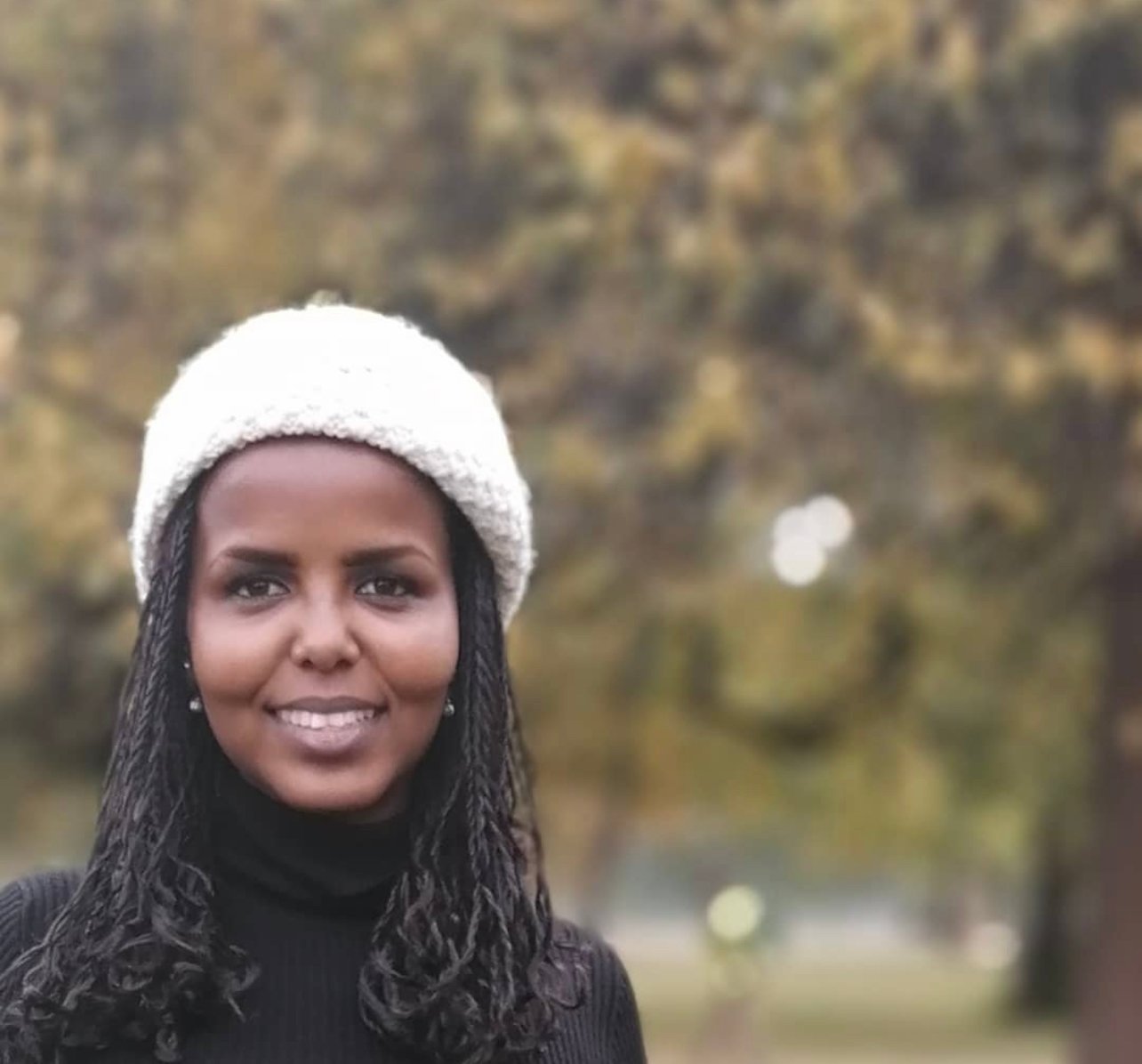
Maryam Al-Marghaniya: A Formidable Figure of The Feminist Movement in Sudan
Throughout the rich tapestry of Sudanese history, one extraordinary woman emerges as a beacon of influence and inspiration: Maryam Al-Marghaniya[1] (1886-1952), affectionately known as Alshareifa Maryam Al-Marghaniya. As the granddaughter of Imam Mohammed Uthman Al-Mirghani Al-Khatim[2], a revered leader of one of Sudan’s largest Sufi orders, the Khatmiyya[3] Maryam’s legacy is deeply intertwined with the spiritual and cultural identity of the region. Residing in the vibrant and historically significant city of Sinkat in eastern Sudan, Maryam played a pivotal role in shaping social dynamics and community cohesion. Her tomb, an esteemed site of reverence, stands as a testament to her enduring impact. Each year, on the first day of the Islamic month of Rajab, a wave of devotion washes over the gathering place as thousands of people from across Sudan converge to honor her memory. This annual pilgrimage transforms Sinkat into a bustling hub of reflection and unity, as individuals engage in heartfelt discussions, share stories, and strategize collective actions that echo her spirit of community and empowerment. Maryam’s remains were laid to rest in Sinkat, and her enduring legacy is celebrated through an event fondly referred to as the “yearbook.” This cherished tradition sees men and women coming together to commemorate her life, fostering a sense of belonging that transcends generations[4]. The date of this poignant celebration is unwavering, falling on the first Thursday of Rajab. As the sun rises over her shrine, the atmosphere is imbued with reverence and anticipation, a palpable connection to the past that continues to inspire gratitude and devotion from those who gather to remember her remarkable journey.
Maryam made a significant impact in the history of the feminist movement in Sudan. Although she did not have formal education or a degree, she utilized Sufism as a religious approach to support her community. Maryam dedicated her life to studying religious sciences in her grandfather’s women’s education institutes[5], such as Khalwa[6]. One of the remarkable changes that she brought about was breaking the most significant social barrier to girls’ education in one of the most remote regions of Sudan, a place where women’s education was often overlooked. Through her unique understanding of religious teachings and Sufism, she promoted tolerance and social change based on solidarity, leading with simplicity and closeness to the impoverished. As the first woman to become a Sufi leader in Sudan, she attracted both female and male followers due to her deep understanding of their concerns. Maryam adopted a method of awareness through her travels, moving between the cities of Suakin and Sinkat in eastern Sudan. During her journeys, she engaged with the community on their issues and identified the pressing needs of marginalized areas long neglected by the government. Many came to recognize her as a compassionate figure who addressed the needs of the underserved.
Despite coming from a wealthy background, having inherited significant property from her father in Hijaz[7], she devoted her resources and energy to helping the poor, ensuring that she did not violate the rights of others. She was known for consuming only the produce from her own livestock, ensuring her wealth did not come at the expense of others’ rights. Maryam’s influence remains evident, as the commemoration of her death has continued for over 70 years, with only a brief interruption during the COVID-19 pandemic. Her annual memorial at her shrine in Sinkat reflects the enduring loyalty of the people in the region, honoring a legacy that has been passed down through generations.
Through her unique interpretation of religious teachings and her deep understanding of Sufism, she instilled an ethos of tolerance and social change rooted in solidarity. Her leadership was marked by remarkable simplicity, and she maintained an unwavering closeness to the marginalized and impoverished members of society, whom she served with compassion. Her approach was not merely academic; it was a heartfelt commitment to foster awareness.

The Mosque of Sharifah Maryam Al-Mirghaniyah in Suakin
(Source: https://www.sudanmemory.org/image/HOH-0000140/1/-/ )
With unyielding determination, Maryam worked diligently to establish Taqas—spiritual centers—adjacent to every mosque, transforming them into safe havens for the needy and wayward travelers seeking refuge[8]. The Beija community in Sudan affectionately referred to her as “bagpipes,” a term signifying her open-hearted nature and her unyielding commitment to aiding all who sought her help. This nickname found its way into the songs and religious chants of women across the region, echoing the fervent prayer, “We ask you, God, to save us bagpipes (save the honorable Maryam).”
Maryam’s journey was marked by a relentless thirst for understanding the fears and challenges faced by her people. She traveled extensively between the cities of Suakin and Sinkat, immersing herself in the realities of these underserved communities, which had long suffered from governmental neglect and marginalization[9]. Her travel made her a messenger of compassion, tirelessly addressing the needs of those who felt invisible and unheard. Dr. John O. Voll, a highly regarded scholar of Islamic history, recognized the immense support Maryam offered for the education of girls in East Sudan[10]. Despite her privileged upbringing and the wealth inherited from her father in Hijaz, she chose a life of service. Maryam channeled her resources to uplift the impoverished, demonstrating a profound respect for others’ rights. She was known to consume only the milk and meat from her own carefully guarded sheep, ensuring her wealth did not encroach upon the rights of others. Maryam’s profound influence endures to this day, as the commemoration of her death has continued uninterrupted for over 70 years, with only a brief pause during the global pandemic[11]. The annual celebration at her shrine in the city of Sinkat serves as a powerful testament to the deep-seated loyalty and admiration of the people of the east harbor for her legacy—a legacy that transcends time and continues to inspire generations to come.
More than 70 years after Maryam, her spirit is being revived by thousands of followers, especially in eastern Sudan. She was profoundly connected to the common people and women, establishing a hospice dedicated to education and travelers. Maryam devoted herself to developing water resources and reaching out to those in need. Embracing Sufi teachings, she set herself apart from others of her faith in Sudan and inspired generations with her legacy. Alshareifa is celebrated for her humility; stories of her life continue to resonate. People remember her simple attire, her compassionate use of resources to support the less fortunate, and her groundbreaking contributions to education. She became a beacon of hope, lighting the way for women’s education in eastern Sudan and paving the path to a brighter future.
Footnotes:
- The first picture is of ‘The Hawliyah’ (death anniversary) of the Sharifah Maryam Al-Mirghaniyah, 2020 (Pic Credit:https://www.instagram.com/faizabubak?igsh=NXM1Zzh0cG9qeXRr @faizabubakr)
- https://en.wikipedia.org/wiki/Khatmiyya
- https://urd.ac.ir/en/5701/Khatmiyya-Tariqa-in-Sudan–(History,-Belief-&-conventions)/
- Shamael Elnoor 2022 https://assafirarabi.com/ar/43785/2022/03/08/%D9%85%D8%B1%D9%8A%D9%85-%D8%A7%D9%84%D8%B3%D9%88%D8%AF%D8%A7%D9%86%D9%8A%D8%A9-%D9%83%D9%8A%D9%81-%D8%B3%D8%A8%D9%82%D8%AA-%D8%B9%D8%B5%D8%B1%D9%87%D8%A7-%D9%85%D9%86-%D9%88
- Khalwa (also spelled Khalwa or Khalawi in plural) is a traditional Islamic school where students memorize and study the Quran. It is similar to a Madrasa but follows a more traditional and spiritual approach.
- Oshik Ali Sharifah Maryam Al-Marghani
- Hijaz is a historical region in Saudi Arabia, not just a single city. It includes major cities such as:
Makkah (Mecca) – The holiest city in Islam, where the Kaaba and Masjid al-Haram are located.
Madinah (Medina) – The second holiest city, where Masjid an-Nabawi and the tomb of Prophet Muhammad (peace be upon him) are located. - Oshik Ali Sharifah Maryam Al-Marghani
- Shamael Elnoor 2022 https://assafirarabi.com/ar/43785/2022/03/08/%D9%85%D8%B1%D9%8A%D9%85-%D8%A7%D9%84%D8%B3%D9%88%D8%AF%D8%A7%D9%86%D9%8A%D8%A9-%D9%83%D9%8A%D9%81-%D8%B3%D8%A8%D9%82%D8%AA-%D8%B9%D8%B5%D8%B1%D9%87%D8%A7-%D9%85%D9%86-%D9%88
- https://assafirarabi.com/ar/43785/2022/03/08/%D9%85%D8%B1%D9%8A%D9%85-%D8%A7%D9%84%D8%B3%D9%88%D8%AF%D8%A7%D9%86%D9%8A%D8%A9-%D9%83%D9%8A%D9%81-%D8%B3%D8%A8%D9%82%D8%AA-%D8%B9%D8%B5%D8%B1%D9%87%D8%A7-%D9%85%D9%86-%D9%88Oshik Ali Sharifah Maryam Al-Marghani
- https://www.aljazeera.net/women/2021/2/17/%D8%A7%D9%84%D8%B4%D8%B1%D9%8A%D9%81%D8%A9-%D9%85%D8%B1%D9%8A%D9%85-%D8%A7%D9%84%D9%85%D8%B1%D8%A3%D8%A9-%D8%A7%D9%84%D8%AA%D9%8A-%D8%AA%D9%87%D9%88%D9%8A-%D8%A5%D9%84%D9%8A%D9%87%D8%A7
(The views expressed in this article are the author’s own. Content can be used with due credit to the author and to ‘Zariya: Women’s Alliance for Dignity and Equality’)

Thouiba Hashim Galad is a skilled human rights professional with over a decade of experience in protection, human rights, and development, particularly focused on forced migration and migrant/refugee communities. She has worked with organizations, including UNHCR, UN Mission, the Swedish International Development Cooperation (SIDA), and various INGOs. A Chevening alumni, Thouiba has a strong academic background with MSc degrees in Migration, Mobility, and Development Studies from SOAS, and Gender Migration and Multicultural Studies. She also holds a specialized certificate in Forced Migration from Oxford University. Thouiba is deeply committed to continuing her advocacy work and expanding her impact on global human rights.



